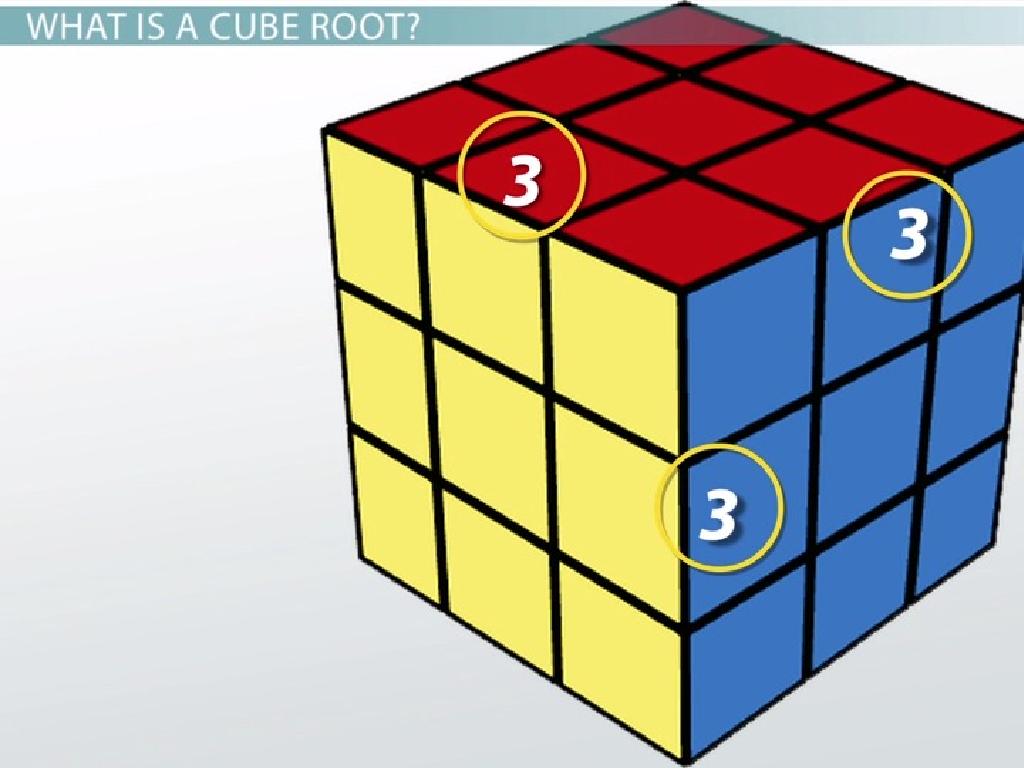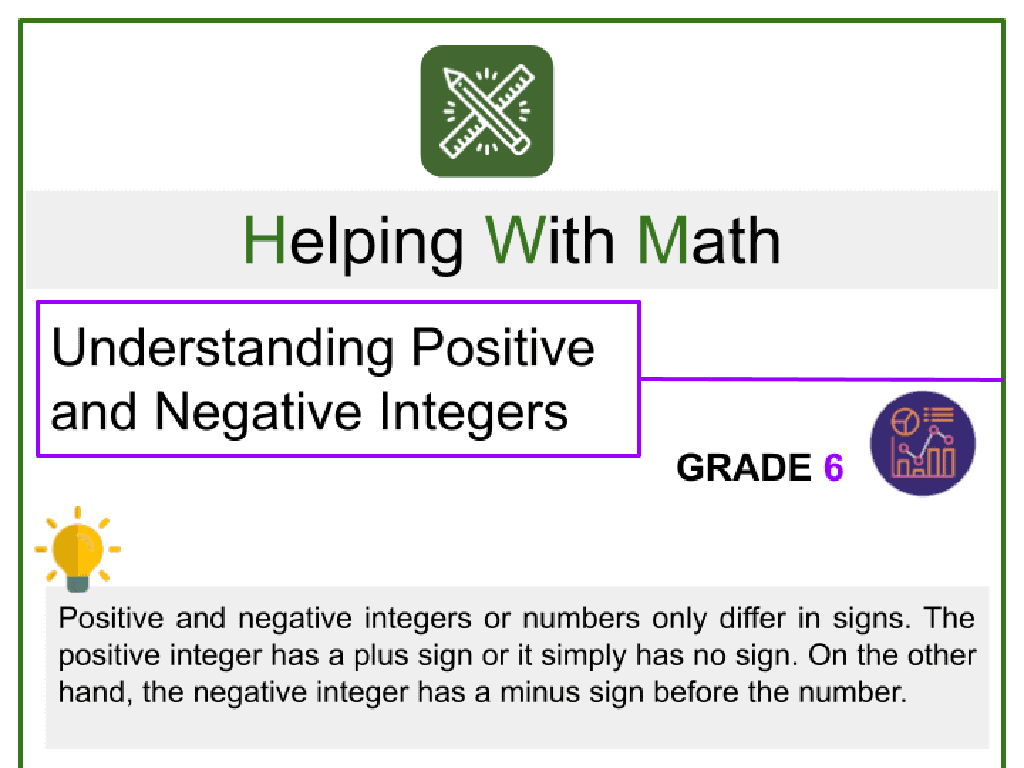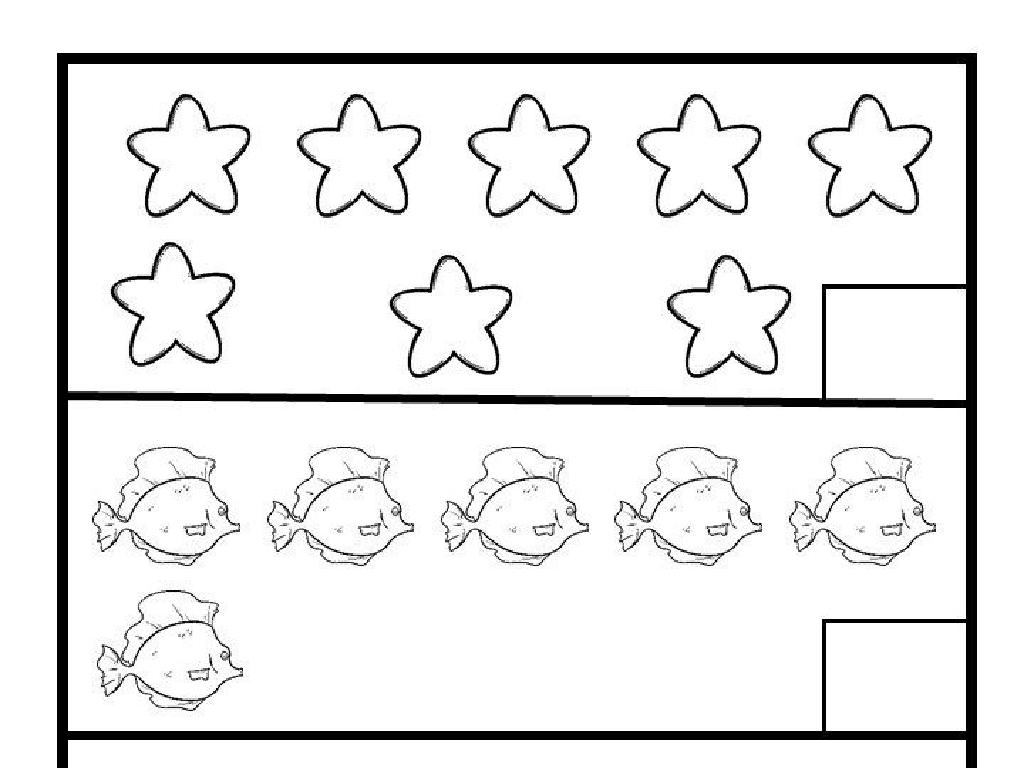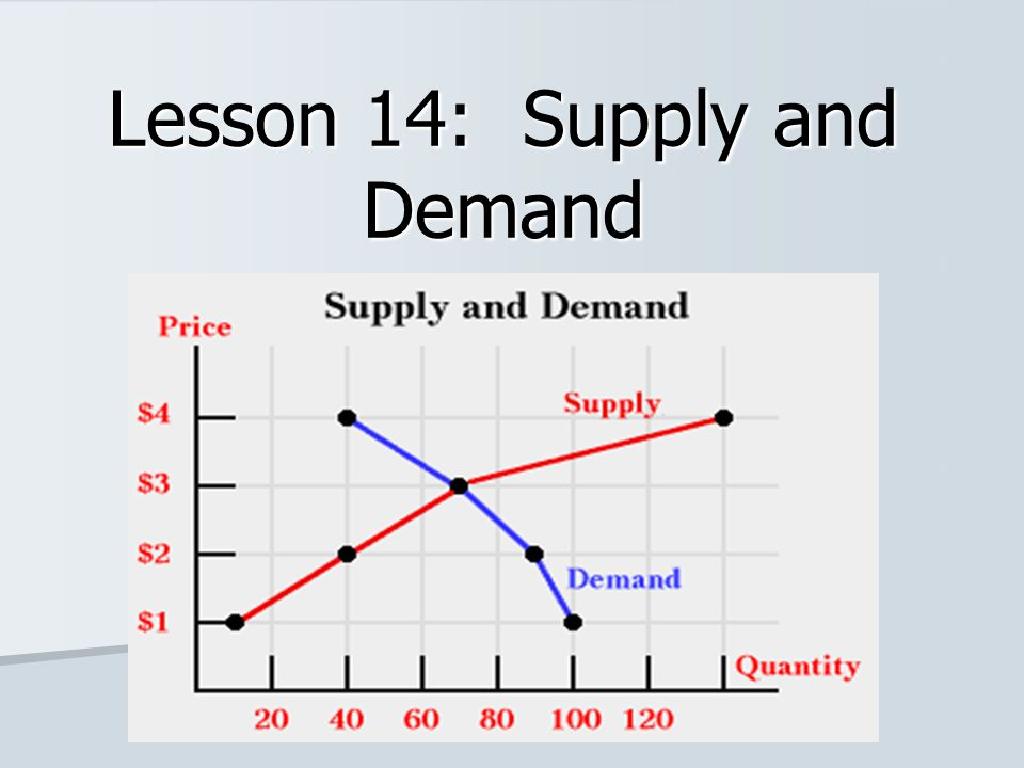Sort Solids, Liquids, And Gases
Subject: Science
Grade: Third grade
Topic: States Of Matter
Please LOG IN to download the presentation. Access is available to registered users only.
View More Content
Exploring States of Matter
– Matter comes in 3 forms
– Solids: Fixed shape and volume
– Examples: Ice (solid), Water (liquid)
– Liquids: Fixed volume, no fixed shape
– Examples: Milk (liquid), Puddles take shape of the ground
– Gases: No fixed shape or volume
– Examples: Air (gas), Balloons expand with gas
|
This slide introduces the concept of the three states of matter: solids, liquids, and gases. Emphasize that matter is anything that takes up space and has mass. Explain that solids have a definite shape and volume, liquids have a definite volume but take the shape of their container, and gases have neither a definite shape nor volume. Use relatable examples like ice, water, and air to illustrate each state. Discuss how matter can change from one state to another, such as ice melting into water or water evaporating into steam. Encourage students to think of other examples and how temperature affects these states. This foundational knowledge sets the stage for understanding more complex scientific concepts.
Exploring States of Matter
– Matter: Everything is made of it
– Matter has mass and occupies space
– Matter comes in solid, liquid, gas
– Examples: Ice, water, steam
– Solids like ice, liquids like water, gases like steam
|
This slide introduces the concept of matter and its different states to third-grade students. Begin by explaining that everything in the world around us is made of matter, including the air we breathe, the water we drink, and the ground we walk on. Emphasize that matter is defined by two main characteristics: it has mass (weight) and it takes up space (volume). Then, discuss the three states of matter solid, liquid, and gas using familiar examples such as ice, water, and steam to illustrate the concept. This will help students visualize how the same substance, like water, can exist in different states. Encourage students to think of other examples of solids, liquids, and gases in their environment.
Characteristics of Solids
– Solids have a set shape and volume
– Like a brick doesn’t change shape
– Particles are packed tight in solids
– They’re like friends holding hands, very close
– Examples: rocks, ice, pencils
– Common solids we see every day
|
This slide introduces the characteristics of solids to third-grade students. Emphasize that solids have a definite shape and volume, meaning they don’t change shape or size unless forced to. Explain that the particles in a solid are like tiny building blocks that are very close together, which is why solids are hard and keep their shape. Use everyday examples like rocks, ice, and pencils to help students connect the concept to the real world. Ask students to think of other solids and how their shape and volume remain constant. This will help them understand the concept of solids in a tangible way.
Characteristics of Liquids
– Liquids have a set volume
– They take the shape of containers
– Particles are close but move freely
– Think of liquids like dancers on a floor – close but still moving around
– Examples: water, milk, honey
– Common liquids we see every day
|
This slide aims to help students understand the properties of liquids within the context of states of matter. Liquids are unique because they have a definite volume, meaning they can’t be compressed into a smaller space, but they don’t have a fixed shape and will spread out to fill the bottom of whatever container they’re in. The particles in a liquid are not as tightly packed as in a solid, allowing them to move around each other, which is why liquids can flow. Use relatable examples like water, milk, and honey to illustrate these concepts. Encourage students to think of other liquids they encounter daily and how these properties are observed in real life.
Exploring Gases: A State of Matter
– Gases lack definite shape
– Gases lack definite volume
– Particles move freely in gases
– In gases, particles are far apart and move around quickly
– Common examples of gases
– Air we breathe, helium in balloons, steam from boiling water
|
This slide introduces the characteristics of gases to third-grade students. Emphasize that unlike solids and liquids, gases do not hold their shape or volume and instead take the shape and volume of their container. Explain that the particles in a gas are much farther apart than in solids and liquids, allowing them to move freely and quickly. This is why we can’t hold gases in our hands like we can with solids. Provide relatable examples such as the air around us, helium used in balloons, and steam from hot water to help students visualize and understand the concept of gases. Encourage students to think of other examples of gases they might encounter in their daily lives.
Sorting Matter: Solids, Liquids, and Gases
– Sort items into states of matter
– Is it hard like a rock, or can it flow like water?
– Characteristics of each state
– Solids hold shape, liquids flow, gases fill their container
– Use examples for sorting
– Water as ice (solid), liquid (water), and steam (gas)
– Understand matter in daily life
|
This slide is aimed at helping third-grade students understand the concept of states of matter by sorting everyday items into solids, liquids, and gases. Start by discussing the characteristics of each state: solids have a fixed shape and volume, liquids have a fixed volume but take the shape of their container, and gases fill the entire space of their container. Provide clear examples for each state to ensure students can easily categorize items. Encourage them to think about items they interact with daily and what state of matter these items are in. This activity will help solidify their understanding of the three states of matter and how to distinguish between them.
Changing States of Matter
– Matter changes states
– Heat melts solids into liquids
– Like ice melting to water
– Heat boils liquids into gases
– Like water boiling to steam
– Cooling condenses gases to liquids
– Like steam cooling to water
|
This slide explains how matter can change between solid, liquid, and gas states through the processes of heating and cooling. Emphasize that the type of matter doesn’t change, just the state it’s in. For example, water can be ice (solid), liquid water, or steam (gas) but it’s all still water. Use relatable examples like melting ice cream or boiling water for tea to illustrate these changes. In class, you could demonstrate these changes with safe experiments, like melting ice or condensing steam on a cold surface. Encourage the students to think of other examples of matter changing states in their daily lives.
Class Activity: Matter Scavenger Hunt
– Find examples of all matter states
– Record findings on your worksheet
– Use the worksheet to note down solids, liquids, and gases
– Work in pairs for discussion
– Share ideas with your partner and decide together
– Categorize each item found
– Decide if each item is a solid, liquid, or gas
|
This interactive activity is designed to help students apply their knowledge of the states of matter by identifying and categorizing solids, liquids, and gases in a fun scavenger hunt. Provide students with a worksheet to record their findings. Encourage them to work collaboratively in pairs to discuss their observations and reasoning. This will not only reinforce their understanding of the concepts but also promote teamwork and communication skills. As a teacher, facilitate the activity by guiding students, answering questions, and ensuring a safe environment for the scavenger hunt. After the activity, regroup and discuss the findings as a class to ensure correct categorization and to address any misconceptions.
Review: Solids, Liquids, and Gases
– Recap: States of matter
Remember, solids have a fixed shape, liquids flow, gases fill their container.
– Examples of each state
Solids: rock, ice; Liquids: water, milk; Gases: air, helium
– Questions about matter?
– Understanding matter
It’s important to know how different materials can change states!
|
This slide is meant to consolidate the students’ understanding of the three states of matter. Start by recapping the characteristics of solids, liquids, and gases. Encourage the students to think of examples for each state of matter, which helps to solidify their understanding through relatable items. Open the floor for any questions the students might have, ensuring they feel comfortable with the topic. Finally, emphasize the importance of recognizing how substances can transition between states, such as water turning into ice or steam, to enhance their grasp of the concept.
Sorting States of Matter: Conclusion
– Excellent work on sorting matter!
– Matter exists in various forms.
– Solids, liquids, and gases are everywhere.
– Observe matter in daily life.
– Notice water, ice, and steam as examples.
– Think like a scientist every day!
|
As we wrap up our lesson on states of matter, congratulate the students on their ability to sort solids, liquids, and gases. Reinforce the concept that matter is everywhere and can exist in different states. Encourage them to continue observing the world around them for examples of each state of matter. Remind them that thinking like scientists means being curious, asking questions, and exploring their environment. This will help them understand and retain the concepts of matter in their everyday lives. For the next class, consider bringing in different objects or substances to demonstrate transitions between states of matter, such as melting ice or boiling water.






